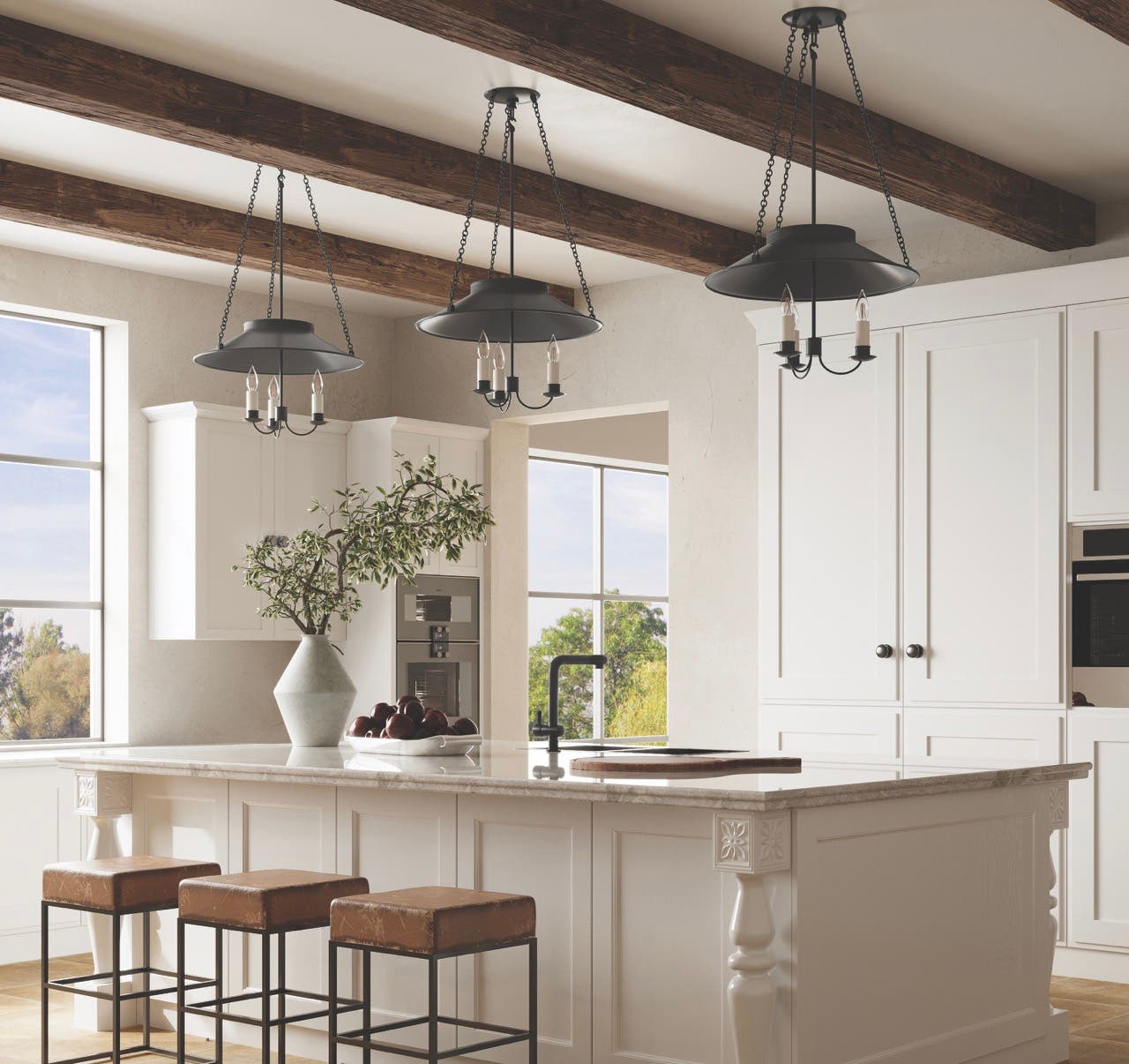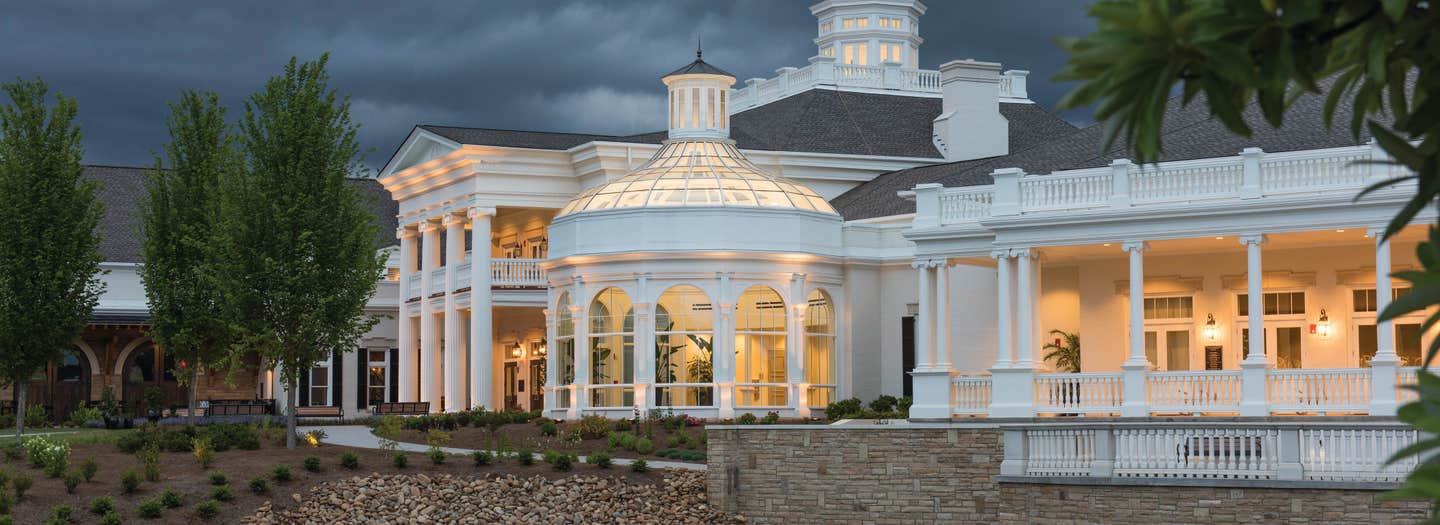
Product Reports
Glass Houses
Conservatories, which originated in the 16th century, illuminate traditional architecture, gracing public spaces and private residences alike. Today they are more viable than ever, thanks to technological advances in glass that make them more energy-efficient and easier to clean.
Whether attached to a structure or freestanding, these glorious glass houses—conservatories, orangeries, and greenhouses—add timeless appeal, as the companies that are designing and building them can attest.
Oak Leaf Conservatories Ltd.
The bespoke conservatories, orangeries, and garden rooms by Oak Leaf Conservatories are hand-crafted in York, England.
“As a specialist conservatory manufacturer, we provide a comprehensive range of services, including design, engineering to the local building code, full working drawings and specification for customer approval, manufacturing, shipping, and installation carried out by our own highly skilled and trained British craftsmen,” says director Amy Magner.
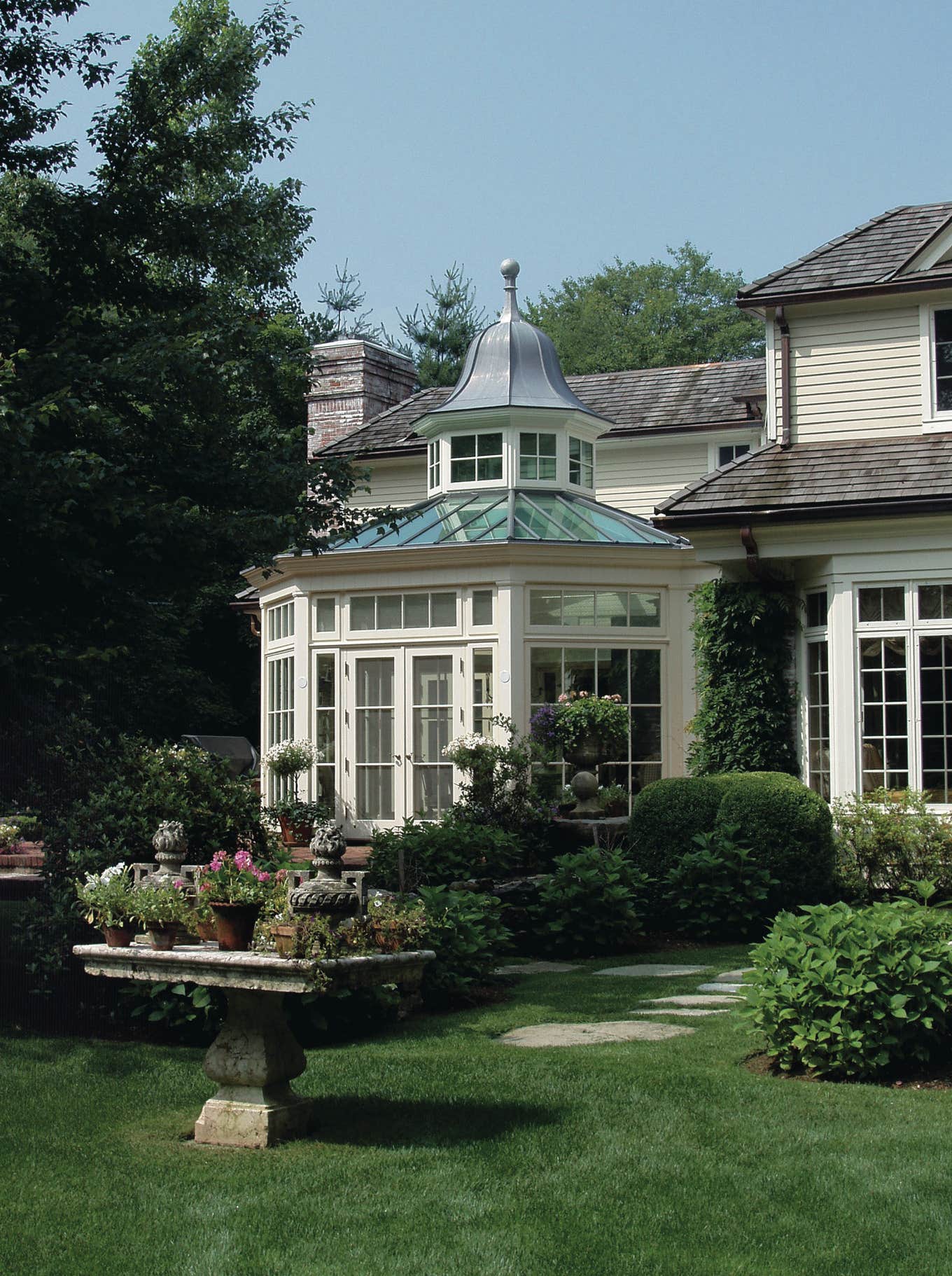
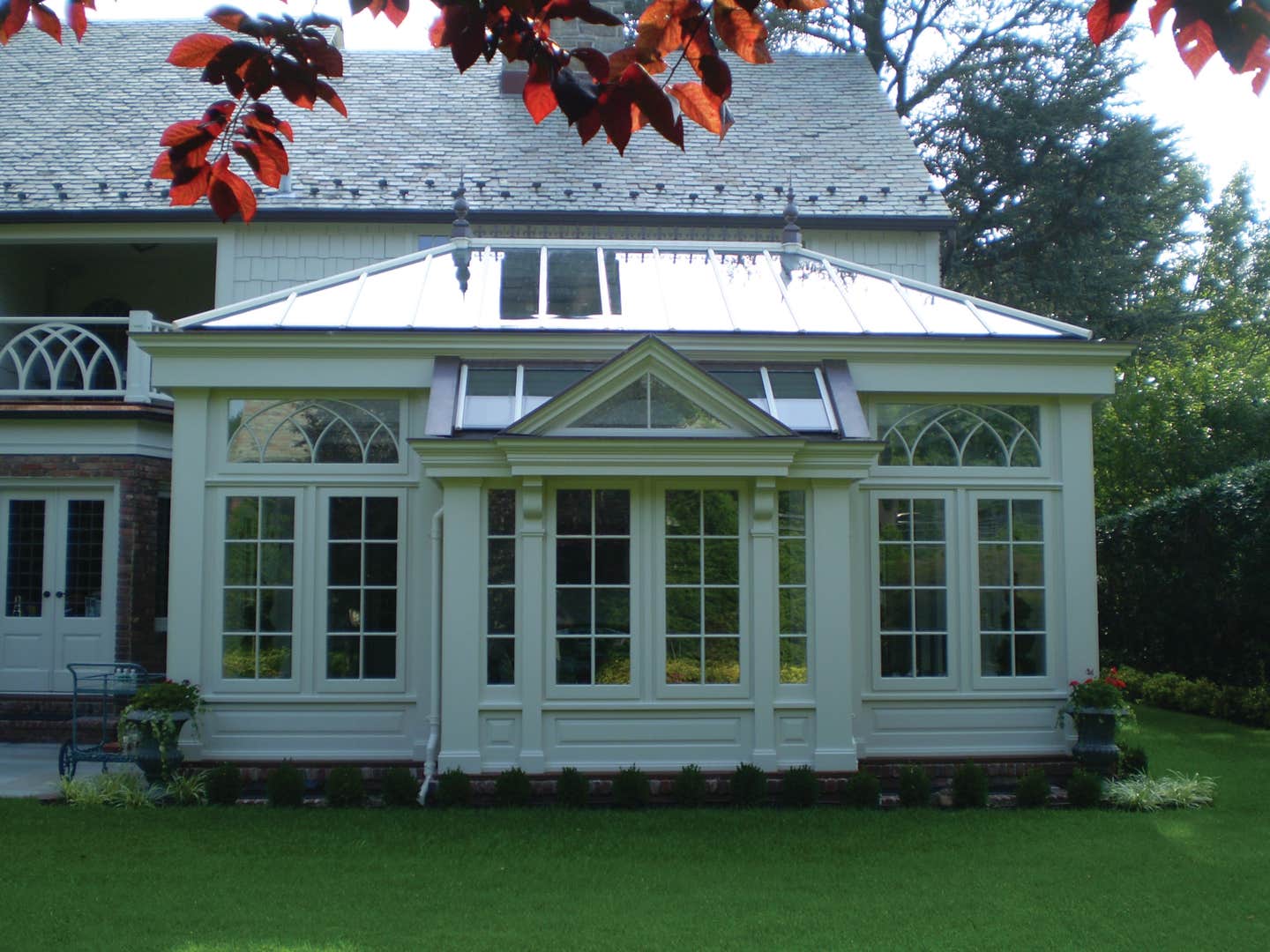
The doors, sashes, and roof structure of the company’s conservatories are made primarily of Sapele mahogany, and mortise and tenon construction is employed. Doors are two inches thick, the glazed roof is finished externally with a two-part, maintenance-free powder extruded aluminum capping system, and specially designed EPDM rubber rafter gaskets provide a waterproof seal that accommodates possible expansion or contraction of the roof. Extruded aluminum eaves provide drainage.
“The modern-day conservatory has better building techniques and energy-efficient products, including insulating and solar-control high-performance and self-cleaning glass, enabling the structure to be used as living space without sacrificing the Classical design,”
Magner says.
Parish Conservatories
For over four decades, the family-owned Parish Conservatories has been building historic replicas and designing custom conservatories for clients around the country. The Connecticut-based company, which also builds and designs orangeries, is associated with the David Salisbury Conservatory Co. of England, which is a leading designer and manufacturer in the United Kingdom for the U.S. market.
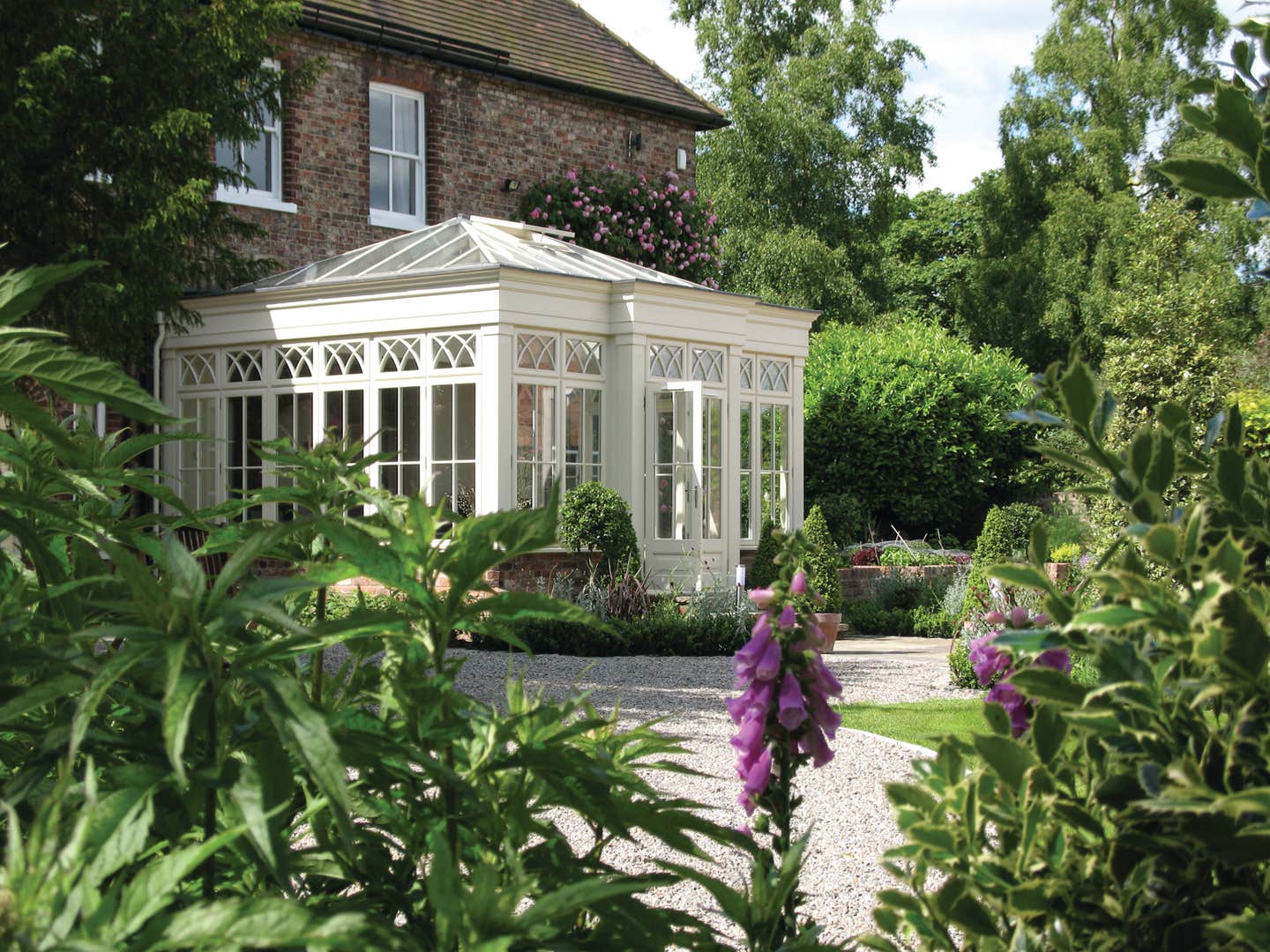

Parish Conservatories offers two material options: timber and aluminum. “Aluminum is better in wet interior conditions like pools and working greenhouses,” says President Paul Zec. “It also lends itself to both contemporary and traditional designs. Timber is warmer and generally more traditional looking, which makes it great for interior spaces.”
Noting that Parish Conservatories often collaborates with architects and designers, Zec says that because of the company’s knowledge of products and ability to overcome design issues, “we can get the correct detailing for things like lighting, shading, and glass options right from the beginning.”
He’s proud that the “beautiful glazing” of conservatories by Parish “brings spaces to life.”
Solar Innovations® Architectural Glazing Systems
A custom fabricator of glass structures, skylights, doors, and windows for commercial and residential projects, Solar Innovations® Architectural Glazing Systems has created thousands of conservatories throughout the United States, including for Yale University and Franklin & Marshall College.
Most of its products are framed in thermally broken aluminum, but it also uses wood on the interiors of some of its projects if requested by the client.
“Our team typically works hand-in-hand with architects and designers,” says Ben Foreman, sales enablement manager of the Pennsylvania-based company that was founded in 1998. “Our years of experience allow us to take designs and plans created by architectural and engineering professionals and assess functionality, style, and performance prior to fabrication’s starting. We also possess a large network of installers capable of erecting our structures, so we are able to help an architect or designer see their vision through to the end.”
Foreman notes that the company takes a “complete-system” approach to projects, fabricating all the doors and operable windows or vents required.
“Additionally, all of our structures are fully engineered to make sure they will stand the test of time,” he says. “Our use of thermally broken materials and insulated glass creates a structure that performs well while looking timeless.”
Whatever the project, he adds, “we will work with the architect, designer, end user, or dealer to come up with the most practical solution.”
Tanglewood Conservatories
Established over 27 years ago, Tanglewood Conservatories designs, manufactures, and installs custom conservatories, orangeries, and greenhouses.
Although the company, which was founded by Alan Stein and Nancy Virts, works primarily in Sapele mahogany, it also has made conservatories of steel and cast iron. “Nancy and I have spent 30 years traveling around the world studying conservatory architecture dating back to the 17th century,” Stein says. “A lot of our inspiration comes from the great historic glass houses. All of our designs are custom—I don’t think we have even replicated one in the entire time we have been in business.”
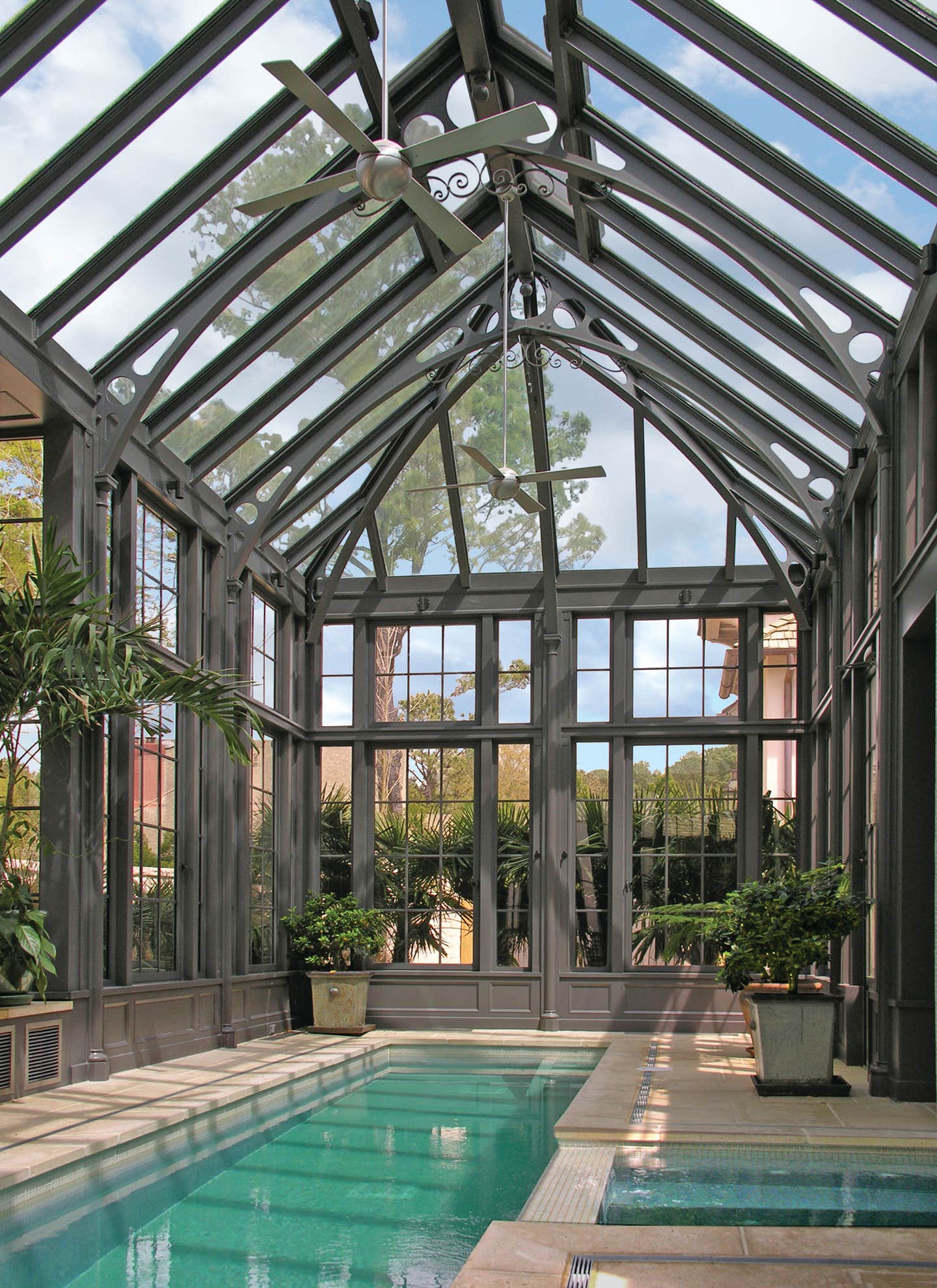
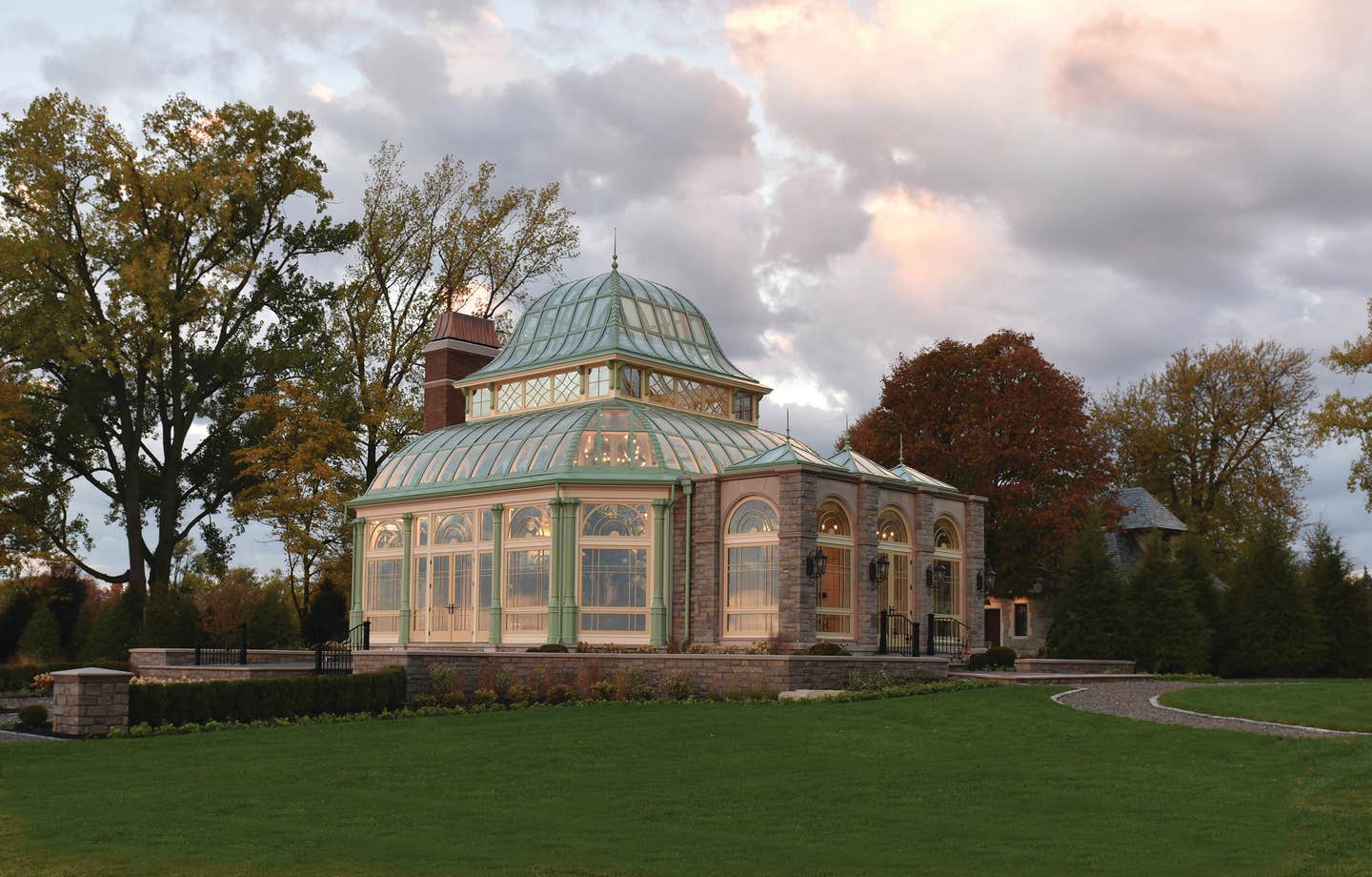
Tanglewood, which is based in Maryland, has completed a number of high-profile commercial and residential conservatories around the country. One of its more recent projects is the Sapele mahogany conservatory that’s part of the newly renovated guest center at the Huntsville Botanical Garden in Alabama.
Its Classical architecture, which is designed to harmonize with the Neoclassical visitors’ center, features a curvilinear roof constructed of flat glass panels that give it a faceted, jewel-like appearance.
For the President’s House at Auburn University, in collaboration with Christopher Architecture & Interiors in Alabama, Tanglewood created a steel and glass conservatory that is being used as an entertainment venue and executive retreat. It features special high-performance glass that automatically darkens when sunlight strikes its surface, blocking the rays to assist in controlling the temperature.
Stein and Virts, authors of The Conservatory: Gardens Under Glass that was published by Princeton Architectural Press in 2021, note that there’s an increasing demand for more architecturally focused residential greenhouses as well as much interest in steel conservatories in the residential realm.
Tanglewood’s portfolio includes small as well as large projects, and Stein says that “our team has traveled the world studying the true magic of conservatories, allowing us to push the boundaries to design and manufacture some of the most unique residential conservatories today.”
Tanglewood has designed conservatories, orangeries, and greenhouses in styles from Georgian to Victorian and everything in between. “From complex shapes and large-scale rooms to highly decorative and detailed designs, we have the capability to create a truly custom glass house.”
Other Key Suppliers
- Glass House, LLC www.glasshouseusa.com
- Hartley Botanic www.hartleybotanic.com
- Renaissance Conservatories www.renaissanceconservatories.com







